Building Your Content Machine: 9 Tips for Success

In today’s digital landscape, creating compelling content isn’t just about writing well—it’s about building a robust content machine that consistently delivers value to your audience. Whether you’re a seasoned marketer or a budding entrepreneur, mastering the art of content creation and distribution can significantly boost your online presence and engagement. This post explores nine essential tips to help you construct a powerful content strategy that resonates with your audience and drives results. Gather Emails: Bake a “subscribe” button into every webpage, blog post, scripts, and newsletter to build your audience (and, thus, impact and reach). Consider scheduling bi-weekly social media posts exclusively promoting this call to action. Know Your Audience: Don’t just guess—use AI research tools, surveys, analytics, and good old-fashioned conversations to understand your audience’s wants and needs. Consistency is Key: Set a realistic publishing schedule and stick to it. It’s better to underpromise and overdeliver. Diversify Your Content: Mix it up with different formats and topics to keep things fresh. Encourage Engagement: Make it easy for your audience to comment, share, and interact with your content. Measure & Adapt: Use analytics to understand what’s working and what’s not. Be bold and pivot. Collaborate & Cross-Pollinate: Invite guest contributors and seek opportunities to contribute to other platforms. Stay True to Your Voice: Authenticity cuts through the noise. Don’t try to be something you’re not. Cast a Wide Net: Amplify your message by forwarding and sharing blogs, videos, and podcasts to relevant media, podcasts, and stakeholders. Implementing these nine strategies will transform your content creation process from sporadic efforts into a well-oiled machine. Remember, building a successful content strategy is an ongoing journey that requires patience, persistence, and adaptability. By focusing on audience growth, understanding your readers, maintaining consistency, and staying true to your authentic voice, you’ll create a content ecosystem that attracts, retains, and engages your target audience. Are you ready to ramp up your content creation and audience engagement? Contact us today—Call 855-MKTNGCO or click here! GO DEEPER: The Media Landscape: A Crowded Party Controlling the Narrative Around Your Brand – It Begins at Home, on Your Website The Content Ecosystem: From Blog to Inbox to Feed (AI Disclaimer: proofed by Grammarly and lightly edited using Claude)
The Content Ecosystem: From Blog to Inbox to Feed

Now, let’s talk about turning your website into a content powerhouse. Picture this: a monthly newsletter that’s actually anticipated, not immediately relegated to the spam folder. Social media posts that spark conversations, not eye-rolls. Videos that people share voluntarily, not just to win a contest. And podcasts that make commutes fly by. Start with Blogs: This is your content home base. Aim for a mix of timely posts and evergreen content that showcases your expertise. Think of your blog as the foundation of your content pyramid—everything else will build from here. Don’t be afraid to dive deep into topics that matter to your audience. Remember, you’re not just sharing information; you’re building trust and establishing authority in your field. Craft a Must-Read Newsletter: Distill your best content into a monthly digest. Add thought-leadership reflections and insights to make subscribers feel like insiders. Your newsletter is your direct line to your audience’s inbox – make it count. Consider including exclusive content or early access to new resources to give subscribers a real reason to open that email. NOTE: Your newsletter is a portal to your media. It is not a long slog of content. Instead, use images or teasers linked to your website and/or social media where you can leverage traffic or create opportunities for engagement. Expand Your Story-Telling: People crave authenticity, so peel back the curtain and let your targeted audiences peek behind the scenes. Profile staff, volunteers, leadership, and even clients—whoever are the beating hearts of your organization. Remember, folks are less interested in slick product pitches and more keen on understanding the values and mission driving your work. Share your origin story, showcase a day in your team’s life, or offer thought leadership that positions you as an industry trailblazer. When you open up, it humanizes your brand and builds trust. Share the struggles, the triumphs, and the everyday moments that make your organization tick. It’s not just story-telling; it’s building lasting engagement and brand loyalty. Create Social Media Magic: Don’t just copy-paste your blog posts. Adapt content for each platform. On LinkedIn, you might share a detailed case study, while on Twitter, you’re distilling complex ideas into bite-sized wisdom. And Instagram? That’s where you show the human side of your brand. Mix it up, keep it fresh, and always, always engage with your followers in the comments section. The companies have gamified engagement, and the rules are constantly changing, so stay on top of the best tactics to hack the algorithm. Lights, Camera, Action: Video content doesn’t have to mean a Hollywood production. Start simple with subject matter expert interviews or behind-the-scenes glimpses. The key is authenticity, not perfection. Your audience craves genuine connection, not polished corporate speak. Try a weekly “Ask Me Anything” session with your leadership team or a monthly industry roundup. And remember to repurpose that video content – a 30-minute interview can become multiple social media clips, blog posts, and newsletter features. Podcasts for the Win: If your CEO can talk for hours about your industry (and let’s face it, they probably can), why not use those monologues? Use this medium to explore complex topics, share stories, and build community. And here’s a pro tip: invite staff, industry leaders, or clients as guests. It’s not just great content; it’s relationship-building and networking rolled into one. Can you perform all this on video? Now, you have video and audio content that can be edited into short clips and shared on social media platforms. In a world where attention is the new currency, owning your content platform isn’t just smart—it’s essential. Are you ready to build your digital soapbox and start shouting from the rooftops? Contact us today—call 855-MKTNGCO or click here! GO DEEPER: The Media Landscape: A Crowded Party Controlling the Narrative Around Your Brand – It Begins at Home, on Your Website Building Your Content Machine: 9 Tips for Success (AI Disclaimer: proofed by Grammarly and lightly edited using Claude)
The Media Landscape: A Crowded Party

Remember the good old days when getting a mention in the local paper was a big win? Well, those days are gone, and pitching stories to the media is starting to seem like it matters as much as a political campaign’s yard sign strategy. Beyond just the 24/7+ news cycle, vanishing beat reporters, and shrinking newsrooms, today’s media landscape feels like a chaotic cocktail party where everyone’s trying to get a word in edgewise. Your carefully crafted press release? It’s competing with cat videos and WWIII. While securing positive earned media coverage will always provide an organization with a certain level of credibility, third-party validation, and exposure, it’s becoming harder and harder to place compelling stories in a timely manner. You have no control over the outcome and framing, and competition for coverage has never been fiercer. Organizations with limited local media and/or time, staff, resources, or bandwidth should consider hosting their own content party instead. Your Website: The New Media Hub Think of your website as your organization’s broadcasting station. It’s prime real estate in the digital world, and you own every square pixel, which, in turn, enables you to: Control the Narrative: When you rely on external media, your message can get lost in translation. You’re the author, editor, and publisher with your own platform. No more misquotes or out-of-context sound bites. Build Direct Relationships: Imagine having a direct line to your audience; no intermediaries required. Mine for Data & Analytics: Every click, share, and comment is valuable information. Use it to refine your strategy and understand what resonates with your targeted audiences. Boost SEO: Regular, high-quality content on your site? Google loves that almost as much as it loves harvesting our data for profit. Content = Google Juice! Operate with Flexibility & Speed: Is there breaking news in your industry? You can react in real-time and on your terms (which can lead to media coverage, BTW). Ready to get started? Contact us today—Call 855-MKTNGCO or click here! GO DEEPER: Controlling the Narrative Around Your Brand – It Begins at Home, on Your Website The Content Ecosystem: From Blog to Inbox to Feed Building Your Content Machine: 9 Tips for Success (AI Disclaimer: proofed by Grammarly and lightly edited using Claude)
Controlling the Narrative Around Your Brand – It Begins at Home, on Your Website

How do you ensure your brand’s voice is heard in a world where everyone is shouting, and everything feels on fire? How do you get your message if you live in a rural community where the nearest newspaper is over two hours away? When current or prospective clients are in search of the latest news related to your company or projects, where would they turn? In the ever-evolving media world, organizations must adapt to a landscape where traditional media outlets are no longer the sole gatekeepers of information. The concept of “earned media,” where coverage is secured through press releases and media outreach, is still valuable but no longer sufficient to cut through the noise by itself. Organizations must embrace a more comprehensive approach to media strategy that includes paid, shared, and owned channels. Paid Media: This involves using advertising platforms such as search engines, display, native advertising, and social media ads to reach specific audiences. It allows organizations to target their desired demographics and deliver tailored messages. Shared Media: This refers to content that is shared via networks on platforms that are not strictly owned by your company. Social media sites would be an example, where you may have developed an audience, but the platform is owned by others and controlled by an algorithm. Another example may be a blog or website owned by an influencer or channel partner. Shared media can be a powerful way to reach new audiences and build brand awareness. Owned Media: This encompasses all the content and platforms an organization controls, such as its website, blog, and email list. Owned media gives organizations a direct line to their audience and allows them to control the narrative. By integrating these four channels, organizations can create a comprehensive media strategy that reaches a broader audience, builds stronger customer relationships, and drives business results. The key is to develop a cohesive strategy that leverages the strengths of each channel and aligns with the organization’s overall marketing and communication goals. Considering all these approaches, it is critical that content central to a company’s lifeblood should have a home on its website. Ready to get started? Contact us today—Call 855-MKTNGCO or click here! GO DEEPER: The Media Landscape: A Crowded Party The Content Ecosystem: From Blog to Inbox to Feed Building Your Content Machine: 9 Tips for Success (AI Disclaimer: proofed by Grammarly and lightly edited using Claude)
Navigating the Ethical Landscape of AI in Communications and Marketing

As communications and marketing professionals, we’ve watched with fascination as artificial intelligence (AI) has transformed our industry. From chatbots to content generation tools, AI is undeniably powerful in helping streamline processes, boost productivity, enhance creativity, and improve audience engagement. The marketplace has been proliferated with tools and apps promising MAGICAL results (the symbol most companies are using to denote AI is magic sparkles ✨). However, in many respects, the use of AI is more like a Magic 8 Ball than what you see in demos. The good news is that humans are still very much needed, at least for now. And as we’ve experimented with these technologies, we’ve also grappled with the complex ethical questions and challenges they raise for communicators and marketers. It has become clear that technology vendors are less concerned with ethics as they iterate and expand the features of their products. One glaring example is Open AI’s new voice assistant sounding eerily similar to actress Scarlett Johannson even after she declined their offer. Indeed, much of the reference materials fed into the large language models (LLMs) that AI platforms are built on were done so without the permission of the content owners/creators. While those instances are not the primary subject of this post, they leave those of us who use these platforms with a sense of caveat emptor when using them. With all that in mind, here are the several concerns organizations should keep in mind while considering the ethical use of AI: BIAS & INACCURACIES: AI algorithms are only as good as the data they are trained on, and they can perpetuate biases and inaccuracies if not carefully designed and monitored. AI tools scrape the Internet for content and can’t always decipher what is true or outdated information. In some cases, AI has shown a tendency to “hallucinate”, which is the cute term for simply making things up. This occurs in some categories more than others. For instance, a recent legal case was tossed because a lawyer used ChatGPT to draft a legal argument. You should never simply copy and paste an AI’s first draft because the generated content could be biased, inaccurate, or misaligned with your brand’s voice and messaging goals. TL:DR: Always proof and verify AI’s outputs. LIMITED CREATIVITY & EMOTIONAL INTELLIGENCE: While they can assist with data analysis, content optimization, and basic design tasks, they cannot replace a human’s strategic thinking, intuition, empathy, and contextual understanding. The quality of the output depends heavily on the quality of the input. Learning effective prompting techniques makes a substantial difference in the generated content’s relevance, coherence, and overall usefulness. We recommend a deep dive into every AI tool’s features, because some can display bias when asked questions regarding emotional or social issues, while others are tuned to display humor. TL:DR: Learn the differences and features of AI tools, and don’t cut corners on ideation and creativity into your prompts. TRANSPARENCY: It is essential to be transparent about using AI and not mislead people into thinking they are interacting with a human (e.g., on a chatbot) or engaging with wholly original content (e.g., art created on Midjourney). Failing to disclose the use of AI can erode trust and damage your reputation. For example, we use Grammarly and Claude AI to proofread and lightly edit our blogs, which we disclose in each post. Lack of disclosure also risks an “uncanny valley” response, which denotes when the receiver (e.g., reader, viewer, etc.) detects artificial-ness of the content, and it can provoke an instant feeling of revulsion. TL:DR: Always disclose the use of AI tools. DATA PRIVACY & SECURITY: AI tools often rely on vast amounts of data to learn and improve, and this can include sensitive personal information. Communicators and marketers must ensure that they collect, use, and store data ethically and securely and are transparent about how data is used. Organizations are broadly discouraged from uploading private and/or proprietary data to AI applications. TL:DR: Do your homework, and read the fine print to protect your audiences’ data, privacy, and security.. ACCOUNTABILITY & RESPONSIBILITY: If an AI tool generates content that is ultimately inaccurate, offensive, or harmful, who is responsible? Is it the creator of the AI tool, the organization using the tool, or the individual who approved the content? For now, the buck stops with humans, and we must manage (rather than rely) on AI tools to ensure we’re serving our audiences accordingly. TL:DR: Good intentions are not enough–humans are ultimately responsible for the impact of AI tools on their audiences. The AI revolution is exciting, and we must stay alert and adaptable. Our north star must always be doing right by our audiences. If you need help choosing the right communications and marketing AI tools for your team or project, we’d love to strategize ethical solutions and train your team! GO DEEPER: 8 Questions About Using AI Responsibly, Answered (Harvard Business Review) AI Will Give Office Workers More Time to ‘Create, Dream and Innovate’ (Financial Review) AI automated discrimination. Here’s how to spot it. (Vox) The “Energy Transition” Won’t Happen (City Journal) (AI disclaimer: proofed by Grammarly and lightly edited using Claude)
